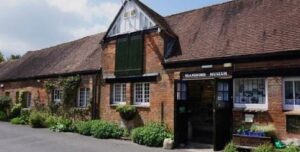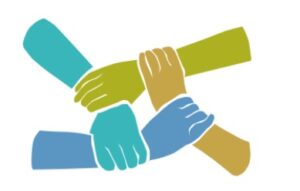Like many community museums, Blandford Town Museum in Dorset is entirely volunteer-run. The museum wanted to increase the number of volunteers overall, but also the diversity of those volunteering. This would help them be more inclusive, add new perspectives to their work, and potentially attract new visitors as well.
The existing team developed a programme, Creating Opportunities for Everyone at Blandford Town Museum, focusing on a series of engagement events. Due to the coronavirus pandemic, these events had to be delivered online (via Zoom), with training in Zoom facilitation from South West Museum Development.
Blandford Town Museum received funding from South West Museum Development’s Small Grant: Big Improvement scheme to deliver their volunteer diversity programme. As you’ll see from the case study, the outcomes are promising, with 12 new volunteers signing up during the programme, and others registering later as a result of the awareness raised. New recruits include students and a whole family of volunteers.
CASE STUDY
Overview
 Blandford Town Museum is a community museum
Blandford Town Museum is a community museum
entirely run by volunteers in Blandford Forum, Dorset. The museum focuses on the history of the town and the surrounding villages, from the Stone Age to the 1960s.
South West Museum Development funded an innovative volunteer recruitment programme, Creative Opportunities for Everyone at the Blandford Town Museum through its Small Grant: Big Improvement scheme. The programme was carefully designed to engage different groups in the community, through a schedule of events. Whilst the pandemic meant that changes had to be made to deliver the events, the programme was successful, initially engaging 12 new people with volunteering at Blandford Town Museum, and a total of 18 new volunteers to date.
Sylvia Hixson Andrews, Director (in a voluntary role), said:
“We want to reinvent the way the museum is seen in the community, so that we’re viewed as a
community resource for everyone, with many different ways to be involved.”
Background
Blandford Town Museum relies on volunteers to achieve its purpose. Traditionally, the majority of volunteers have come from older age groups, and new volunteers found out about opportunities by word of mouth rather than through an open, planned, targeted recruitment campaign. The museum wanted to change its approach to address both of these specific issues.
The museum recognised that the pandemic has raised the profile of volunteering, and this also prompted the new approach:
“There has been such a sense of community through the pandemic, and we want to act quickly to harness the volunteering spirit that people have already shown. Volunteering is a habit… we want to keep that spirit alive.”
Objectives
- Increase the number of volunteers and the range of skills overall.
- Reach out to a different demographic profile, and to those in specific protected characteristics groups (following the Equality Act 2010).
- Engage people who might want to help run the organisation, to support succession planning.
- Emphasise the many ways that volunteers can have an impact on the direction the museum takes, the kinds of exhibits and events the museum can offer, and the value of volunteers’ support.
- Address diversity and inclusion and support equality action planning, both by diversifying the workforce and bringing new perspectives into museum programming.
Process
- Blandford Town Museum devised, advertised and delivered a series of Behind the Scenes taster sessions to show how people volunteer.
- The sessions focused on introducing different parts of the museum and highlighted ways to be involved. Session leaders emphasised the benefits for volunteers, such as opportunities to gain or practice skills, to socialise, or to shape projects.
- Some sessions were targeted at particular demographics or protected characteristics groups (under the Equality Act 2010), including families, and people with disabilities.
- It was made clear that everyone was welcome at all sessions
Advertising methods
 Paid adverts.
Paid adverts.- Editorial in local publications.
- A radio interview.
- Website promotions.
- Social media posts.
- Flyers distributed locally.
Adapting to changes
- The ongoing pandemic led to uncertainty about delivering the sessions in person. In the event, the third national lockdown in early 2021 meant the Behind-the Scenes taster sessions had to be delivered entirely on Zoom.
- This change led to an urgent training need for museum volunteers which was met by working with South West Museum Development’s officers. Volunteers were trained in Zoom facilitation, including safety considerations for all Zoom event attendees.
- It was difficult to access secondary schools due to the pandemic; the museum has since scheduled visits to sixth forms to introduce volunteering and work experience opportunities in autumn 2021. A visit in September 2021 brought in five new A-Level student volunteers.
Outcomes
- 18 volunteers have signed up, including 8 young people (aged under 30) and one family.
- 10 of the volunteers had not engaged with the museum in any way before.
- 4 established volunteers were engaged throughout the project, to help make it happen.
- 4 volunteers have taken on leadership roles. 10 volunteers have supported museum events.
- New volunteers have also supported one off tasks – through micro-volunteering or volunteering at a distance to support online activity.
- The museum can now access new skills in website management, finance and creative writing, plus experience in history, engineering and archaeology
Outcomes were gradual, as Sylvia Hixson Andrews explained:
“We had 10 people who attended the Zoom sessions in the middle of the UK lockdown. Of those 10, half actually began volunteering with the museum immediately.
However, in the months since, as a result of the interest generated by the project, we had 1 person return to take on a much larger role, and 7 new people come forward to participate during June and July, bringing the total engaged by that point to 13. Then, in September, 5 young people signed up.
In total, 18 people have got involved in some way since we began our targeted recruitment campaign.”
Key points for effective practice
A clear call to action with a specific programme of events appears to have greater success than a general, ongoing recruitment drive.
The press coverage given to the programme of taster sessions attracted volunteers who had volunteered short term in the past to re-engage. It also helped volunteers returning after COVID-19 closure to see the wider value of the experience they were returning to, and consider different ways of helping the museum.
Conclusions and recommendations
 This was a well-organised but flexible programme, adapted to pandemic conditions. By offering many ways to contribute as a volunteer, Blandford Town Museum found that a wider range of people engaged with the taster sessions and the prospect of volunteering.
This was a well-organised but flexible programme, adapted to pandemic conditions. By offering many ways to contribute as a volunteer, Blandford Town Museum found that a wider range of people engaged with the taster sessions and the prospect of volunteering.
The activity emphasised that the door is always open for people to get involved – prospective volunteers could take up the opportunity at a later date, but still formed an accurate impression of a democratic, welcoming organisation that values a range of skills, perspectives and time commitments.
The programme reflects the underlying ethos of this museum – that volunteering is, above all, a mutually beneficial activity, as Sylvia Hixson Andrews said:
“We think that volunteering, and the involvement that a volunteer has with the museum, should not just be about the needs of the museum, but should provide volunteers with opportunities as well.”
Download the PDF case study below:
